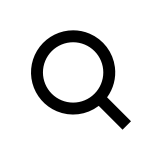Hugo Roelandt — The End Is a New Beginning
 © graphic design: Esther Le Roy
© graphic design: Esther Le Roy
HUGO ROELANDT
The End is a New Beginning
Hugo Roelandt (Aalst 1950–Antwerp 2015) was a versatile artist, at various times a performer, installation artist and photographer. From the mid-'70s onwards, he became a leading figure in Antwerp's post-war avant-garde. He began his artistic career with presentations organised by the New Reform Gallery in Aalst, renowned for its focus on performance art. An influential figure amongst the artistic community, Roelandt also co-founded the radical alternative art space Montevideo (together with Annie Gentils) in Antwerp in 1981, and served as a non-conformist teacher in the photography department at the Royal Academy of Fine Arts Antwerp (1991–2010).
Roelandt did not confine himself to a single artistic genre or style. His performances, photographic series and interventions in public space were characterised by their diverse and sometimes contradictory nature. His many collaborations with artists, musicians, linguists and scientists, including Anne-Mie Van Kerckhoven, Narcisse Tordoir, Ria Pacquée, Guillaume Bijl, Luc Steels, Danny Devos, and his long-time collaborator Marc Holthof among others, contrasted with his extensive series of self-portraits, demonstrating his multifaceted approach. While he was primarily identified as a performance artist, he was critical of the evolving nature of performance art.
It was during the 1970s that Roelandt’s work evolved from photography towards performance. Having originally trained as a photographer, he produced numerous self-portraits, most notably in his Feelings series (1974) where he made exaggerated facial expressions for the camera. The significance of these works lay not just in the self-images but also the use of the body as an instrument in their making. Representation was a recurring theme in Roelandt’s philosophy. Early in his career, he developed a disdain for what he termed “Photo Photo,” which he associated with overly-serious, clichéd representations that prioritised aesthetics over experimentation. He often stated that his works did not represent anything and were not narrative, and not realistic portrayals of the world.
As Roelandt’s career progressed into the 1980s, he began developing what he termed as “post-performance.” This phase marked a shift away from active performance toward conceptual projects that involved machines and technology, such as telephone and answer-machine dialogues that underscored departures in theory and practice. In this time of key developments in post-modern philosophy as well as research in the field of artificial intelligence in Belgium, post-performance looked away from traditional performance and individualism, towards a systems approach that was some steps removed from the agency of the artist’s body.
Throughout his career, Roelandt sought to deconstruct traditional notions of art. He believed that art should reflect the complexities of contemporary life and societal issues rather than adhere to aesthetic orthodoxy. Key themes in his practice included body image and gender norms, automation, and the bourgeois nature of the artistic field. Another key theme being the urban environment, as demonstrated by his key work Pavimenti (1987), an intervention on the façade of what is now the M HKA building. His later works emphasised the role of the audience in experiencing art, suggesting that art could be a shared, participatory experience rather than a solitary appreciation of a finished product. Concurrently, further developments in his practice led to works with a more elemental quality, utilising water, air, light and fire.
The End is a New Beginning is Hugo Roelandt’s first museum overview exhibition, and will mark ten years since his passing. M HKA and CKV (Flanders Art Archive Centre) received the complete archive of Hugo Roelandt, which includes key artworks, and an array of material including documentation, notes, sketches, information on unrealised projects, as well as his personal library that served as an educational resource. An artist resistant to the art market and bourgeois norms, his practice was never made with the intent of legacy in mind. More important was freedom in his life and work. Yet, in holding such valuable cultural assets, M HKA takes on the complex challenge to examine Roelandt’s practice, contextualising it in terms of the important place it holds in history of image and performance in Belgium, seeking to bring his oeuvre to broader public and international attention. In this regard, M HKA has launched this online platform as a public resource on Hugo Roelandt’s practice.
The exhibition is curated by Nav Haq and Joanna Zielinska in collaboration with Marc Holthof and Lydia Van Loock.
Hugo Roelandt’s work The Shape of Water will also be presented at the Fundació Joan Miró in June 2025, where it was originally installed by the artist in 1986. This collaboration between M HKA and Fundació Joan Miró is part of the 50th anniversary programme of the Fundació Joan Miró.
Additionally, M HKA will host a presentation by the recipient of the Hugo Roelandt Prize 2024, Sean Peleman as part of the INBOX programme in May 2025.
Download the exhibition booklet here.
Click here to browse the digital scan of the exhibition.
